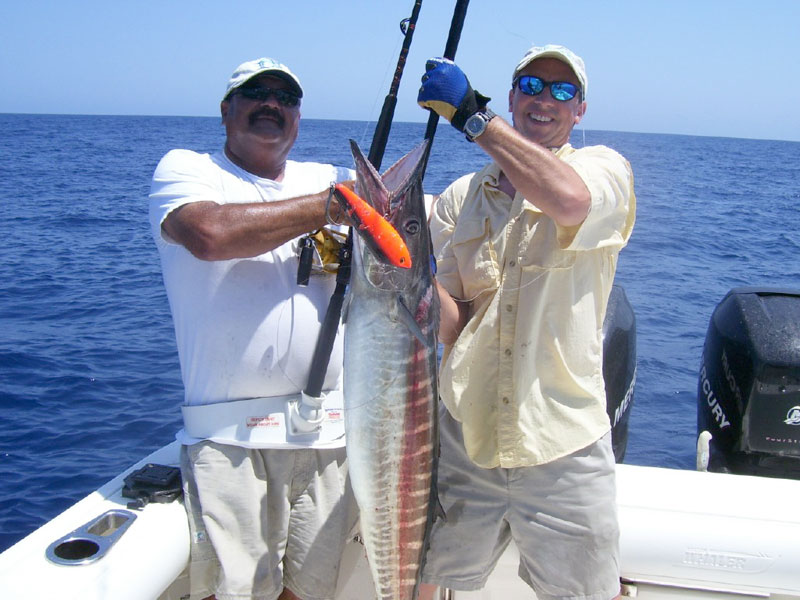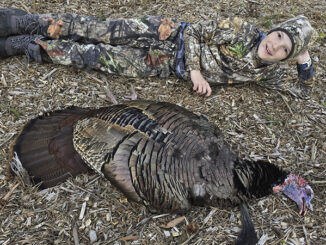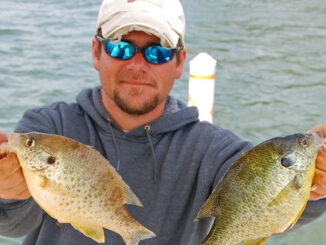
Properly-matched tackle is a joy to fish with
When I made my living charter fishing, I got a lot of requests from customers to go fishing on their private boats. I always insisted on a quick tackle session to see what we were working with. I regularly saw one common mistake. Rigs for wahoo with 8/0 or 9/0 hooks would be on long, limber rods intended for king mackerel. Or live bait rigs with No. 4 treble hooks would be clipped on 30W reels.
These situations were the first step to increasing catch rates for these beginners. Matching your tackle from the rod butt all the way to the tip of the hook is important for whatever species you want to chase.
One of the more exciting catches I ever had as a charter captain was a rat blue marlin (maybe 125 pounds) on 15-pound test, essentially a live bait rod, 60-pound fluorocarbon leader, and a Matzuo 6/0 dink hook. The reel was set between 2 and 3 pounds of drag. All these details of the rigging are important here.
We were on a white-hot dolphin bite. And the farther I pushed offshore of the ledge, the larger the fish got, to a point where a 30-pounder was average. With some fairly competent anglers on board, I asked if one of them wanted to try for a 2-to-1 on line class, and they jumped at the opportunity.
Rig it right
My mate Rob made a great rig with about 8 feet of doubled line from a Bimini, and spliced on the leader. And we switched out the flat lines for teasers. Less than 5 minutes later, we all saw the bill, switched the fish off of the teaser, got the bite, then cleared the whole spread as we chased a crazed marlin more than 10 miles around the Atlantic.
With the light drag setting, line breakage was never in question. And the lighter rod was able to provide enough cushion to the whole system when the fish surged. Maybe most importantly, the hook was small enough (not to mention sharp enough) to get set in the fish’s mouth, but large enough that it stayed in place for the duration of the fight.
If you want sustained angling success, match your rod size to the hook that you want to use, and then figure out the rest of the equation. The right rod (when there is an appropriate amount of drag on the reel) sets the hook and keeps it in.
Many saltwater anglers put a ton of effort and resources into acquiring their ideal boat and reels. And they often ignore important specifics when it comes to rods and hooks. This leads to decreased batting averages. Having the wrong rod or hook in play won’t keep you from getting a bite. But if you can’t get hooks consistently set in mouths, or protect that connection through the fight, you’re not going to land many fish.
Hook it properly
I recently went trout fishing with a good friend on a gorgeous new bay boat. Every reel was a Shimano Stella. He had rigged all of his popping corks and leaders perfectly, and the 7’6” Star rods he chose were exactly what I like. But instead of my favored No. 6 treble (2x, in gold finish) at the end of the fluorocarbon, he had much larger, stronger, long-shanked hooks tied on.
Not wanting to be a jerk on a trip where I was a guest, I gave it a go. Of 12 solid bites, we caught a single fish. Most fish would stay hooked for a second, and then nothing. To me, live shrimp are too expensive to use as bait this way without some more positive results.
I finally switched to my preferred hook and got much better results. Needless to say, my friend stopped at the tackle store on the way home and hit the Eagle Claw rack hard.
Catch more fish
When it comes to the offshore world, I like dolphin fishing best of all. One reason is that you can have a blast catching them in so many ways. You can catch a good many dolphin on live bait rigs with two No. 4 or No. 6 trebles, on a live bait rod (20-pound class) and 2 pounds of drag on the reel.
My personal favorite way to catch them is on a dink rod (30-pound class) on a Matzuo dink hook (6/0) or Mustad 9174DT (5/0) hook. A bit stouter rod than before, so the reel (usually a TLD 20 or 25) should push about 4 – 4.5 pounds of drag.
You can pull even stouter, 50-pound class rods (you can use bigger baits here also) and use a Mustad 7692DT (8/0) with a mono rig or 7731DT (7/0) with No. 9 wire. In this case, your reel is probably a 30W or 50W and you might want to go as high as 8 to 9 pounds of strike drag. You are targeting the same fish, but you are matching your tackle up for maximum efficiency. Aside from using sharp hooks, fresh line, and good connections, matching the hook to the rod will make your catch rates soar.




Be the first to comment